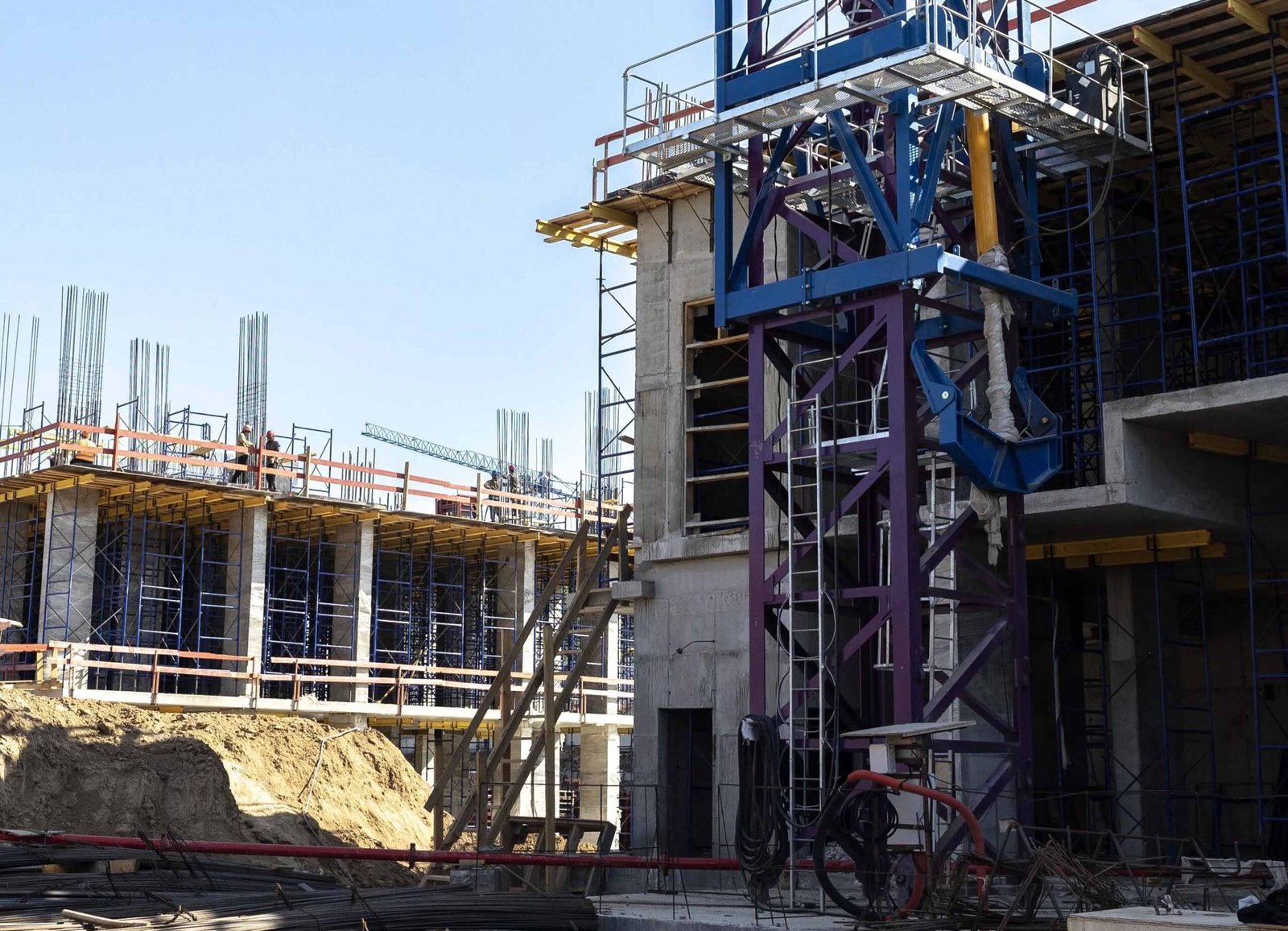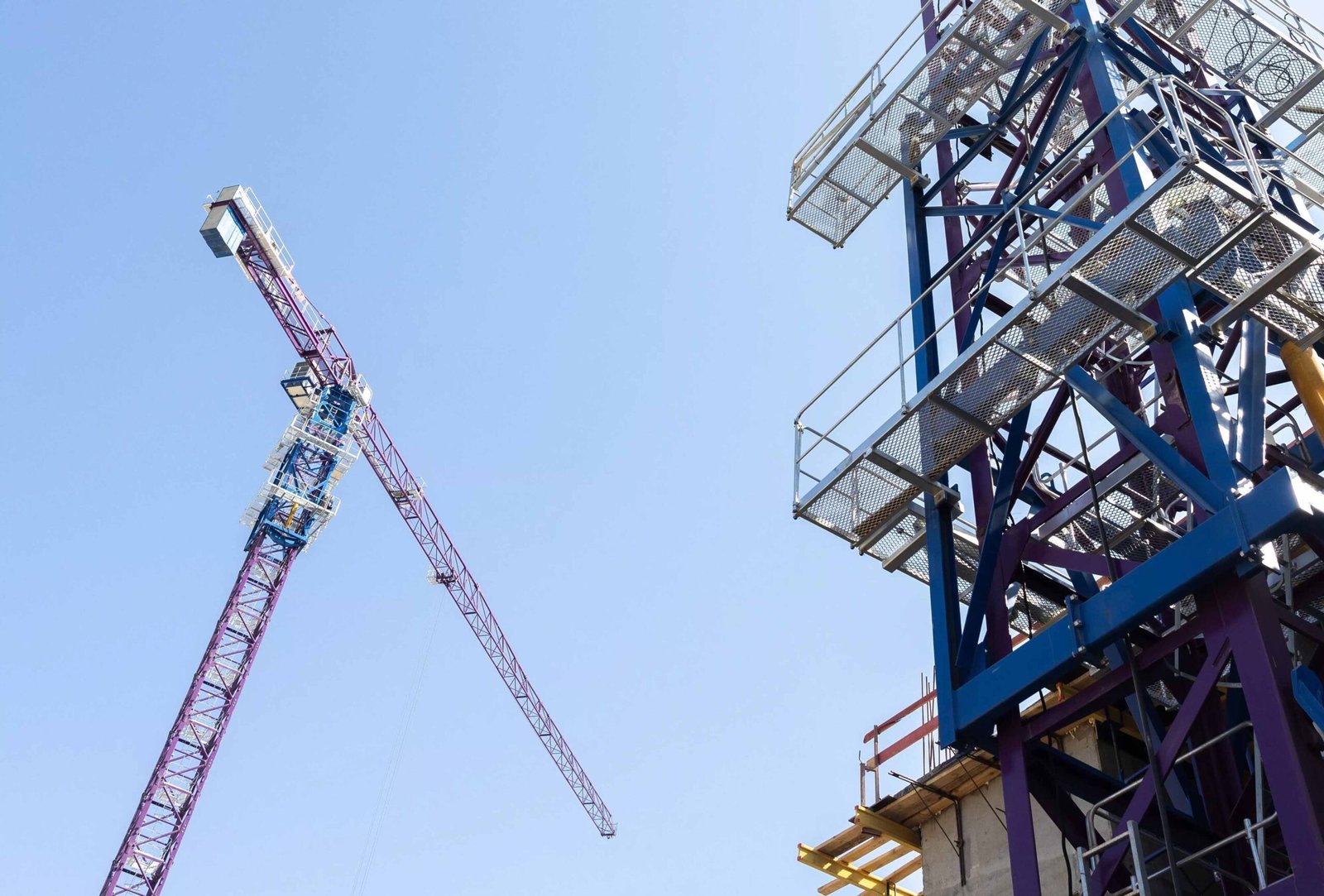
Cranes are one of the most vital machines in the construction industry, playing a key role in lifting, moving, and positioning materials on construction sites. But what exactly do cranes do, and why are they so essential for building structures? In this article, we’ll dive into the various tasks cranes perform, their key components, and how they contribute to construction projects.
Cranes are used in construction to lift heavy materials like steel, concrete, and tools. They move materials vertically and horizontally, improving efficiency on site.
Let’s take a closer look at the work that cranes do and how they operate on construction sites.
What do cranes actually do?

Cranes are primarily used for lifting and moving heavy materials at construction sites. Their main task is to hoist large items like steel beams1, concrete slabs2, and heavy equipment to areas that are difficult to reach by other means. In construction, cranes are essential for building tall structures, as they allow materials to be lifted to great heights, something that would be nearly impossible using manual labor.
There are several tasks that cranes perform on construction sites:
-
Lifting Construction Materials: This includes large items like steel beams, concrete blocks, precast panels, and mortar. Cranes lift these materials to the appropriate floors of a building or to areas that are far away from the ground.
-
Positioning Equipment: Cranes are also used to move large machinery and equipment. This could include generators, ventilation systems, and even construction site tools like crane buckets for mixing concrete.
-
Assisting with Structural Assembly: Tower cranes3, for example, play a key role in assembling building structures, placing and adjusting large components as the building rises.
Cranes can move materials both vertically and horizontally, allowing them to place items at precise locations on the construction site. Their ability to rotate 360 degrees also ensures they can access nearly every part of the site without needing to be moved.
Key Crane Functions on Construction Sites
| Function | Description |
|---|---|
| Lifting Materials | Lifts steel beams, concrete, and other heavy items |
| Moving Equipment | Moves large machinery like generators and ventilation systems |
| Structural Assembly | Positions beams and other components as buildings rise |
Without cranes, the speed and efficiency of construction projects would be drastically reduced, especially in cases of tall buildings or large-scale infrastructure.
What is the most important part of a crane?

The most important part of a crane is its lifting mechanism, which includes the boom (arm), hoist (lifting system), and hook. These components work together to perform the key function of moving materials:
-
Boom: The boom is the long arm that extends from the crane. It supports the load and allows for vertical and horizontal movement of materials. The length and angle of the boom are adjustable, allowing the crane to reach various heights and distances.
-
Hoist: The hoist consists of a motor-driven winch that lifts and lowers the load using cables. The hoist mechanism is connected to the hook and can raise heavy materials, as well as lower them with precision.
-
Hook: The hook is the point where the load is attached. It is designed to securely hold materials and allow for their safe movement.
These three elements — boom, hoist, and hook — work in conjunction to allow the crane to perform its lifting and moving tasks efficiently. Proper operation and maintenance of these components are critical for ensuring the crane’s safety and performance on-site.
Important Crane Components
| Component | Function |
|---|---|
| Boom | The arm that extends and positions the load |
| Hoist | The lifting mechanism that raises and lowers the load |
| Hook | The attachment point for the load |
How does a construction crane operate?

A construction crane operates by lifting and moving materials using a combination of hydraulic systems4, motors, and mechanical parts. While the exact operation varies depending on the crane type, the general process involves several key steps:
-
Setup: The crane is first set up in the correct position on the construction site. For tower cranes, this means assembling the crane’s tower on-site. For mobile cranes, this involves setting the crane on stable ground and ensuring that the booms and counterweights are correctly configured.
-
Lifting the Load: Once the crane is ready, the operator uses controls to activate the hoist mechanism. This lifts the load, which is attached to the hook via cables. The operator can control the speed and height of the lift, as well as the angle of the boom to place the load in the correct position.
-
Moving the Load: Cranes can also rotate and move horizontally. Tower cranes, for instance, can rotate 360 degrees to place materials in different locations around the construction site. Mobile cranes can move along tracks or wheels to transport materials across the site.
-
Positioning and Lowering the Load: The final step is positioning the load at the required location and gently lowering it into place. This is done with great care to ensure precision and prevent damage to the materials.
The crane operator uses a control panel or remote controls to manage these tasks, making adjustments based on the project’s needs.
Crane Operation Process
| Step | Description |
|---|---|
| Setup | Positioning and assembling the crane on-site |
| Lifting the Load | Using the hoist to raise the material to the desired height |
| Moving the Load | Rotating or moving the crane horizontally to transport the load |
| Positioning and Lowering | Carefully placing the load where it is needed |
How do cranes get taken down?

Once construction is complete or the crane is no longer needed, cranes must be safely dismantled and removed from the site. The process of taking down a crane depends on its type, but generally involves the following steps:
-
Removing the Load: The first step in dismantling a crane is to remove any materials or equipment it is lifting. This ensures that the crane is not under stress during the disassembly.
-
Disassembling the Boom: For tower cranes, the boom is typically removed in sections. The crane is lowered back down to the ground, and each piece is carefully taken apart. Mobile cranes are more straightforward to dismantle, as their parts are already modular and can be separated quickly.
-
Lifting Components: Large cranes often require smaller cranes to help lift heavy components during disassembly. These cranes will remove the heavier parts, such as the counterweights and main structure, piece by piece.
-
Transporting the Crane: Once fully disassembled, the crane parts are packed up and transported off-site for storage or reuse on another project.
This process requires careful planning and coordination to ensure the safety of workers and the protection of the crane’s components.
Crane Dismantling Process
| Step | Description |
|---|---|
| Removing the Load | Ensure all materials are removed from the crane |
| Disassembling the Boom | Taking apart the crane’s boom section by section |
| Lifting Components | Using smaller cranes to lift heavy parts during disassembly |
| Transporting the Crane | Packing up and transporting parts off-site |
Which type of crane is used in construction?

There are several types of cranes used in construction, depending on the project’s needs:
-
Tower Cranes: These are the most common type of crane used for high-rise building construction. Tower cranes are fixed to the ground and can lift materials to great heights, making them ideal for tall buildings and large infrastructure projects.
-
Mobile Cranes: These cranes are mounted on wheels or tracks and can be moved around the construction site. They are ideal for lifting materials over shorter distances and are often used in areas where mobility is key.
-
Crawler Cranes: These cranes are similar to mobile cranes but are mounted on tracks5 rather than wheels. This gives them more stability and makes them ideal for uneven or soft ground conditions.
-
Overhead Cranes: These cranes are used primarily in indoor environments like factories or warehouses. They are mounted on tracks that run along the ceiling and can lift materials across the facility.
Common Construction Crane Types
| Crane Type | Best Use Case |
|---|---|
| Tower Crane | Ideal for high-rise buildings and large projects |
| Mobile Crane | Suitable for moving materials across shorter distances |
| Crawler Crane | Best for uneven ground conditions and heavy lifting |
| Overhead Crane | Used indoors for moving materials across factories or warehouses |
Each crane type has its own strengths and is chosen based on the project’s requirements, ground conditions, and lifting capacity.
Conclusion
Cranes play an essential role in construction, handling tasks such as lifting and moving heavy materials, positioning equipment, and assisting in the assembly of large structures. The most important components of a crane are the boom, hoist, and hook, which work together to lift and move materials efficiently. Cranes are dismantled carefully once a project is complete, and the type of crane used depends on the specific needs of the construction site.
-
Explore the role of steel beams in structural construction. ↩
-
Understand the key role of concrete in construction. ↩
-
Learn how tower cranes contribute to large construction projects. ↩
-
Understand the importance of hydraulic systems in crane operation. ↩
-
Explore the benefits of crawler cranes on uneven ground. ↩






